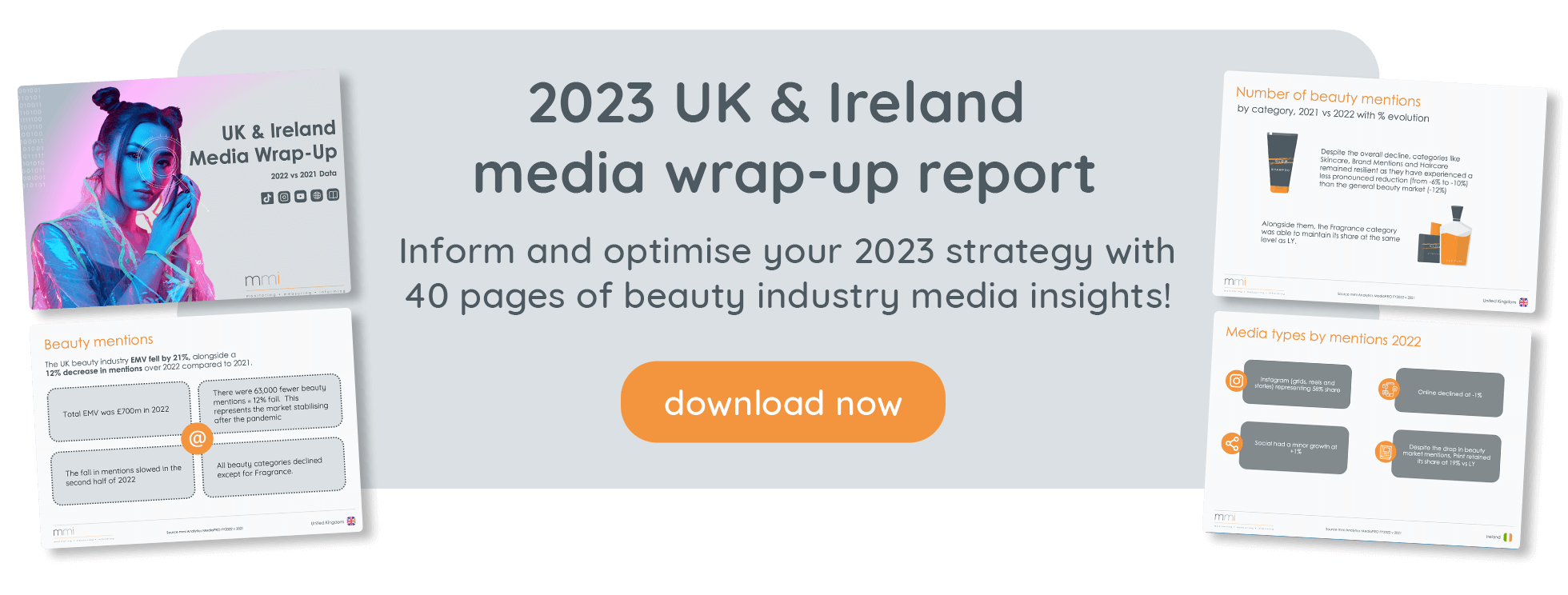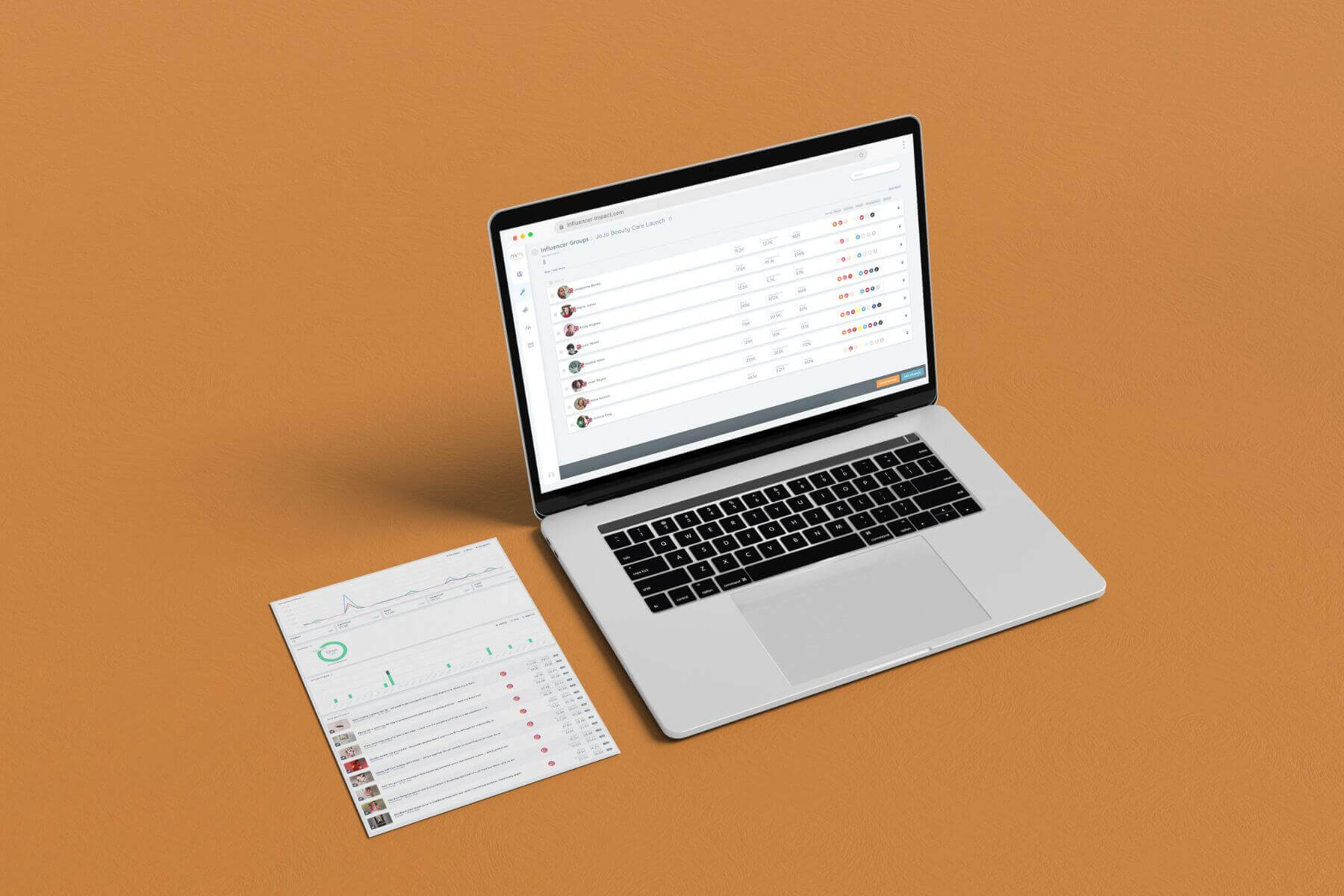The beauty industry generates more than $100 billion in worldwide revenue; a figure that indicates just how fiercely competitive the current landscape can be. Propelling your product line forward isn’t easy in this saturated space, but benchmarking is a key stepping stone to accelerating your success. The question is, what should you be benchmarking? Each area of your business should be analysing competition, whether you’re looking at your etail performance, your pricing strategy, or your co-op advertising. In this article, we’re focusing on competitive benchmarks in the media, so you can understand your brand’s positioning – and amplify your industry-wide visibility.
Here’s how to choose your benchmarks…
1. Amount of media coverage
When tracking your brand’s media coverage, looking at the volume of mentions is a basic yet essential step. However, on its own, it tells you little about your PR performance.
Benchmark the figure with your top competitors to understand what it means within context. It also becomes a more meaningful metric when you layer it with other statistics, such as overall reach and circulation. This brings us to our next metric…
2. Reach and circulation
If high visibility is your brand’s goal, you should be looking at the reach and circulation you’ve gained. These figures will show you how many pairs of eyes are truly on your brand as a result of media coverage. Then, layer this data with volume of coverage to give context to a high or low number of mentions. After all, high mentions don't always mean strong presence if a publication’s circulation is low.
Once you’ve analysed your own performance, benchmark it against the reach your competitors have achieved, so you can identify opportunities and gaps in your own PR strategy. But remember, it’s important to pay attention to the demographic of far-reaching publications. If their audience doesn’t align with your target customers, the mentions may not be as valuable to your brand.
3. Weight of media coverage
The weight or quality of media mentions can be assessed not only by how large a feature is, but also by how well it communicates your key brand or product messaging. A 20-word shoutout in a magazine for one brand and a two-page feature for another would equal one mention each, but the quality of the coverage may be vastly different. More in-depth articles can delve into your brand story, your company’s values (sustainable, vegan, etc.) and the efficacy of a new product to entice, excite and persuade beauty consumers. That’s why you should be layering mentions and reach with a quality of media assessment when benchmarking your coverage against that of your competitors.
4. Earned media value
If you want to combine all of the above into one metric, there are many ‘scores’ available. mmi’s earned media value (EMV) score combines the calibre of the publication, the frequency of posting, and the quality defined by the ‘space’. On its own, EMV doesn’t provide enough insight into media performance, but when used as a benchmark, it offers a great way to combine a number of metrics and look at that in context of the market.
And that’s what successful media benchmarking is all about; layering insights to get a clear view of how visible your brand is compared to your competitors. It’s a broad landscape – spanning social media, print, broadcasting, e-zines, and beyond – but the right tool and methodology will standardise the many metrics to help you clearly see what your PR strategy is missing.
Find out more about how mmi analytics data and reports can help you see the bigger picture. Download our media wrap up report H1 2022.
Up next: Discover the top 10 UK beauty influencers during Q3 2022.





